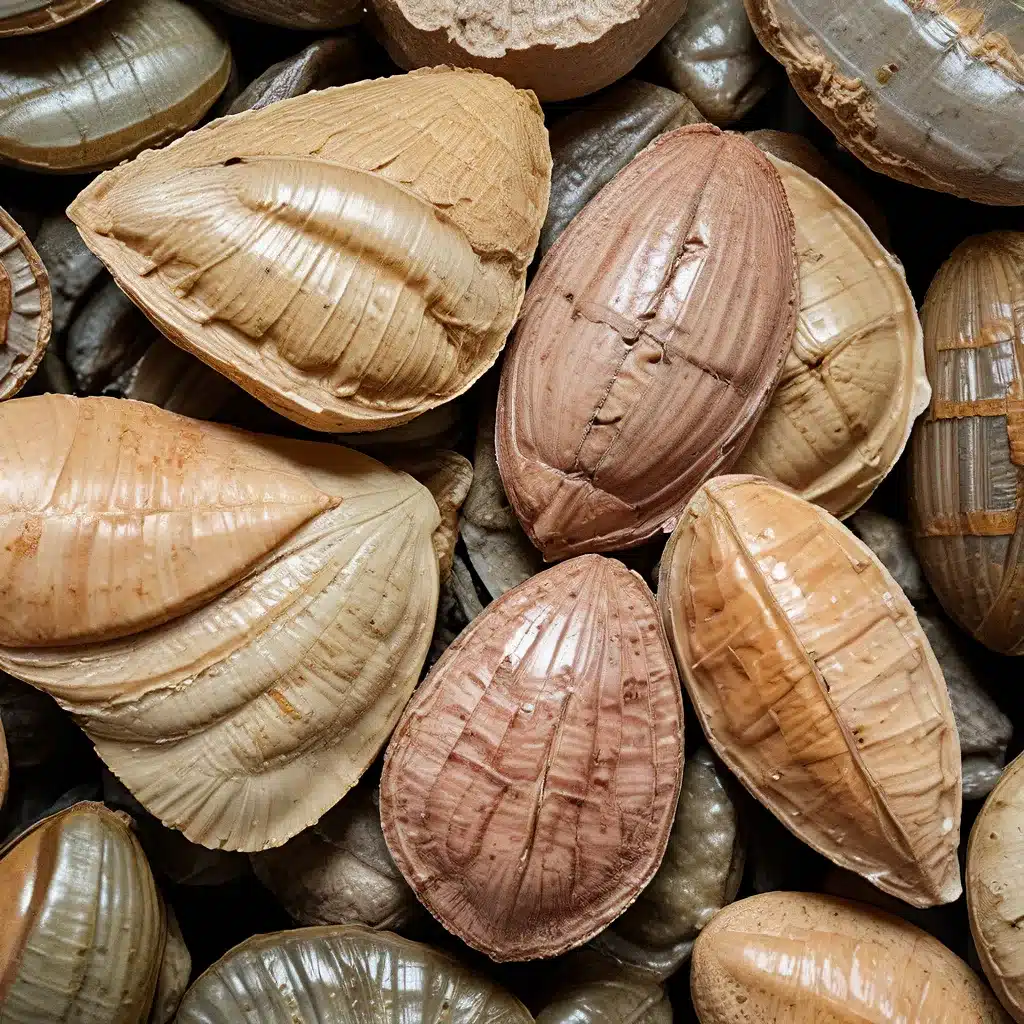
Discovering the Wonders of Chitons
Nestled among the intricate tapestry of marine life found in rocky tidepools, there exists a group of fascinating creatures known as chitons. These unassuming mollusks may seem inconspicuous at first glance, but a closer examination reveals a world of remarkable adaptations and captivating beauty.
Chitons, also known as “sea cradles” or “coat-of-mail shells,” are a diverse group of marine invertebrates that have remained relatively unchanged for hundreds of millions of years. With their distinctive segmented shells and ability to cling tightly to rocky surfaces, these remarkable creatures have captured the attention of naturalists and aquarium enthusiasts alike.
One of the most striking features of chitons is their unique shell structure. Unlike the typical single-piece shells of other mollusks, chitons possess a shell made up of eight individual plates that are hinged together. This arrangement allows the chiton to flex and conform to the uneven surface of rocks, enabling it to maintain a strong grip even in the face of powerful waves and currents.
Chitons are not only visually captivating, but they also play a crucial role in the delicate balance of rocky intertidal ecosystems. As grazers, they help to maintain the health of algal communities, ensuring a diverse and vibrant landscape for other marine organisms to thrive. Their ability to persist in harsh environments, surviving the ebb and flow of tides, is a testament to their evolutionary resilience.
Exploring the Diverse Chiton Species
One of the joys of studying and observing chitons is the sheer diversity of species found around the world. From the brilliantly colored Tonicella marmorea, with its intricate patterns of blues, greens, and reds, to the more subdued yet equally fascinating Mopalia muscosa, each species offers a unique window into the remarkable adaptations of these mollusks.
| Species | Distinguishing Features | Habitat |
|---|---|---|
| Tonicella marmorea (Marbled Chiton) | Vibrant, multicolored shell plates; often found in tidal pools | Rocky intertidal zones and subtidal areas |
| Mopalia muscosa (Mossy Chiton) | Olive-green to brown shell plates with a mossy appearance; found in crevices and under rocks | Mid to low intertidal zones and subtidal areas |
| Acanthopleura granulata (Fuzzy Chiton) | Rough, granular shell plates; often found in exposed, high-energy areas | Rocky intertidal zones and shallow subtidal areas |
The diversity of chiton species is not only a testament to their evolutionary success, but it also highlights the importance of understanding and preserving these unique marine creatures. Each species has developed specialized adaptations to thrive in their respective habitats, from the rugged Acanthopleura granulata found in high-energy intertidal zones to the more delicate Mopalia muscosa that prefers the sheltered crevices of the mid to low tidal areas.
Captivating Chitons in Aquaria
For aquarium enthusiasts, the introduction of chitons into a carefully curated marine aquarium can add a captivating and educational element to the hobby. These remarkable mollusks not only contribute to the aesthetic appeal of the tank but also play a vital role in maintaining the overall health and balance of the aquatic ecosystem.
One of the key considerations when incorporating chitons into an aquarium setup is their specific care requirements. Chitons are generally hardy and adaptable, but they do have unique needs that must be addressed to ensure their long-term well-being. Factors such as water quality, lighting, and the availability of suitable substrate and hiding places are all crucial to the successful maintenance of chitons in a home aquarium.
King Aquarium offers a wealth of resources and expert guidance to help aquarists navigate the nuances of chiton care. By understanding the specific needs of these remarkable mollusks, hobbyists can create captivating aquarium displays that showcase the natural beauty and ecological significance of chitons.
Sustainable Aquascaping with Chitons
Beyond their aesthetic appeal, chitons can also play an important role in the sustainable aquascaping of marine aquariums. As grazers, these mollusks can help to control the growth of algae, maintaining a healthy balance in the aquatic ecosystem and reducing the need for manual algae removal.
By incorporating chitons into their aquascaping plans, aquarists can create a more self-sustaining and eco-friendly aquarium environment. Tonicella marmorea, for example, with its vibrant and varied colors, can add a striking visual element to the aquascape while also contributing to the overall health of the system.
Moreover, the ability of chitons to thrive in rocky, uneven substrates makes them well-suited for aquascaping techniques that mimic natural tidal pool environments. By carefully crafting the aquarium’s hardscape and incorporating suitable hiding places, aquarists can create a captivating and immersive display that showcases the unique adaptations of these remarkable mollusks.
Conclusion: Embracing the Captivating Chitons
As we venture into the mesmerizing world of chitons, it becomes evident that these unassuming creatures are far from ordinary. Their intricate shell structures, diverse species, and crucial ecological roles make them fascinating subjects for both naturalists and aquarium enthusiasts alike.
By understanding the unique needs and adaptations of chitons, aquarists can create stunning and sustainable aquarium displays that not only showcase the beauty of these molluscan marvels but also contribute to the overall health and balance of the aquatic ecosystem. Through the exploration and appreciation of chitons, we can deepen our connection with the incredible diversity of life that thrives in the ever-changing tidal pools and rocky shores.
So, the next time you find yourself peering into a tidepool or contemplating the design of your marine aquarium, take a moment to appreciate the captivating chitons and the wonders they have to offer. Let these remarkable creatures inspire your curiosity, enrich your understanding of the natural world, and guide you towards creating aquatic environments that truly celebrate the majesty of the sea.

